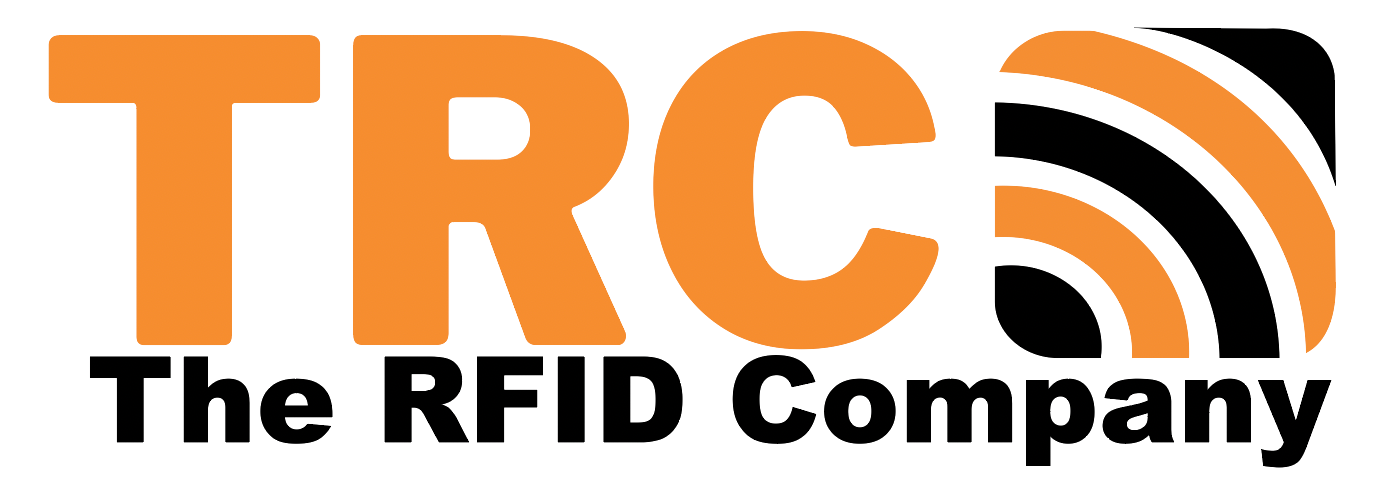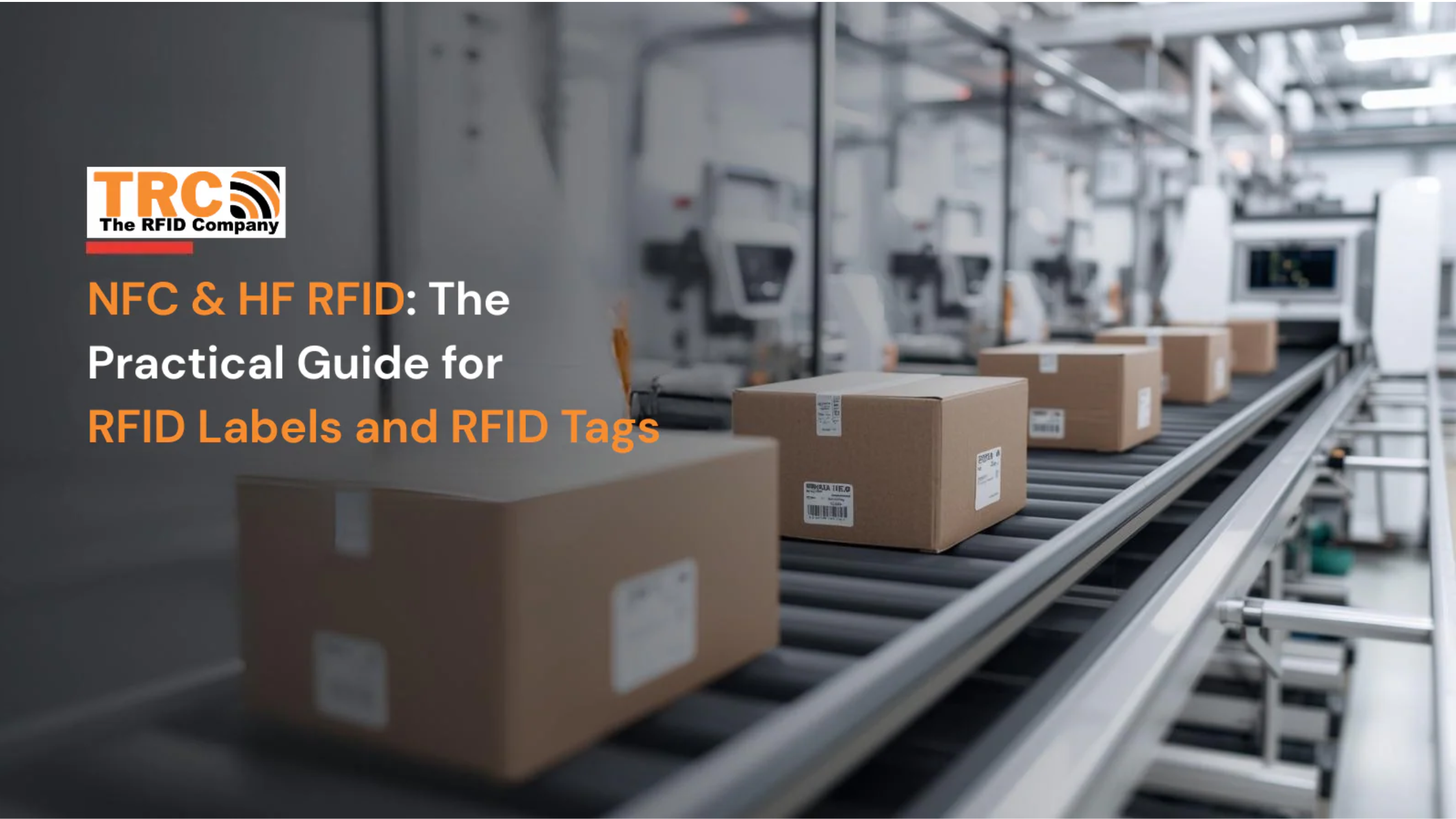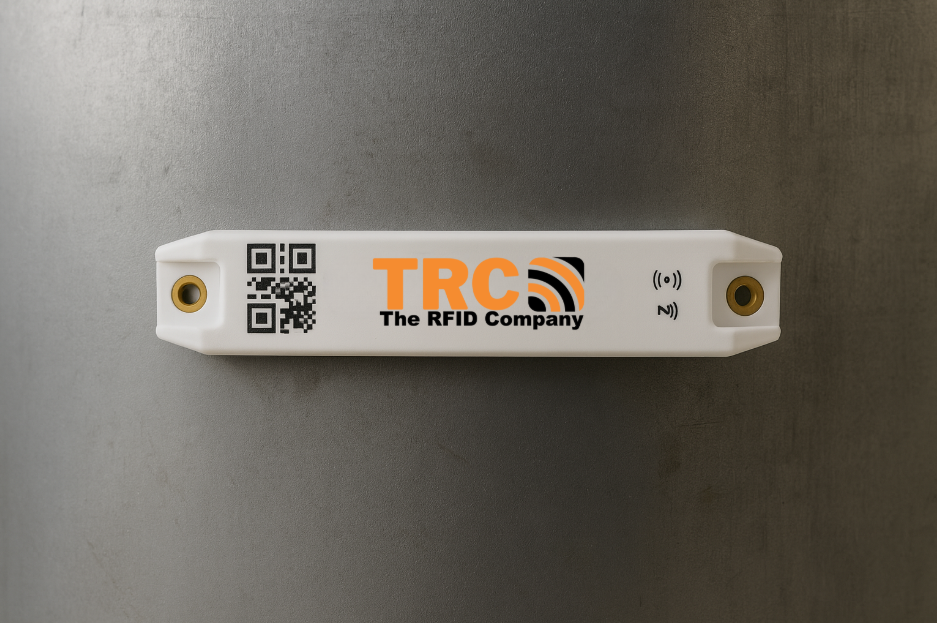High Frequency (HF) RFID and Near Field Communication (NFC) are closely related technologies that power everything from access cards and ticketing systems to smart packaging and product authentication. Both run at 13.56 MHz, but they serve slightly different roles. In this blog, we’ll explore the differences, key standards, and where each technology shines in European deployments.
1) NFC vs HF
✅ HF RFID = High Frequency at 13.56 MHz for short-range reads; common in cards, tickets, passports, and libraries.
✅ NFC = A subset of HF that adds phone compatibility, peer-to-peer, and secure card-emulation modes via NFC Forum profiles built on ISO 14443/18092. 📱
Why teams like it in Europe: global ISM band + mature standards = smooth cross-border deployments.
2) When HF/NFC beats UHF (and when it doesn’t)
✅ Near liquids or mixed materials: HF typically behaves more predictably than UHF.
✅ Controlled read range: perfect for check-in kiosks, POS, visitor badges, tap-to-engage packaging.
✅ Smartphone ecosystem: modern phones read NFC tags out of the box. 📱
Consider UHF when you need fast, long-range multi-item reads in warehouses, shelves, or dock doors. 📦
3) Standards that Matter (EU Projects)
✅ ISO/IEC 14443 A/B: proximity cards at 13.56 MHz (tap distance).
✅ ISO/IEC 15693: vicinity cards at 13.56 MHz (longer range with big loop antennas).
✅ ISO/IEC 18000-3: HF air interface options.
✅ NFC Forum: built on ISO 14443 / 18092; profiles for phones, peer-to-peer, secure transactions. 🔒
Compliance tip: HF sits in a global ISM band; still follow CE and local spectrum rules for readers.
4) HF/NFC RFID Labels and RFID Tags: Common Form Factors
✅ Label inlays (stickers): thin HF labels for packaging, files, library items.
✅ Card/badge tags: access, transit, visitor management at 13.56 MHz.
✅ On-metal / hard tags: engineered housings and antenna designs for tougher or metallic environments.
✅ Sensor-enabled tags: add temperature or other readings for healthcare and cold-chain. ♻️
5) Popular EU Use Cases
✅ Access control & visitor badges (HF cards).
✅ Transport, ticketing, passports (HF, ISO 14443/15693).
✅ Smart packaging & product authentication (NFC + phone tap).
✅ Libraries, files, records (HF labels).
6) Quick Chooser: HF/NFC or UHF?
Choose HF/NFC when you need:
✅ Short, predictable “tap” distance.
✅ Phone compatibility for customer or staff interactions.
✅ Better behaviour near liquids in cosmetics, beverages, pharma.
Choose UHF when you need:
✅ Long-range, high-throughput inventory reads (shelves, carts, dock doors).
7) Implementation Checklist (Idea → Pilot)
- Define the job: access/authentication or tap-to-engage vs bulk inventory.
- Select tag type: RFID labels for packaging or documents; on-metal / rugged RFID tags for tools, trolleys, IT assets.
- Pick the standard: ISO 14443/15693 or NFC Forum profiles for HF/NFC.
- Readers & devices: 13.56 MHz desktop/panel readers; for NFC, modern smartphones often suffice.
- Encoding & data: keep IDs simple, align with ERP/WMS; plan any user memory on the tag.
- Pilot: start small, measure read reliability and process time, then roll out.
- Connect the dots: from this post, link to RFID Tags, Readers, Printers, Antennas, Encoding, and Integration pages for next steps.
FAQs
Q1: Are HF and NFC the same thing?
A: NFC is part of HF. Both use 13.56 MHz; NFC adds phone compatibility and secure modes.
Q2: How far can HF/NFC read?
A: Typical tap distance for ISO 14443; up to vicinity range with ISO 15693 using larger antennas.
Q3: Are HF/NFC RFID labels suitable near liquids?
A: Yes, HF generally behaves more predictably around liquids than UHF in many packaging scenarios.
Q4: Which RFID tags should I choose for metal assets?
A: Use on-metal tags or specialized housings; options exist across frequencies, including HF.
Q5: What should I plan for EU compliance?
A: HF is in the global ISM band; ensure equipment carries CE marking and observe local reader power limits.





Share:
On-metal RFID labels that actually read: foam spacers vs thin ferrite
PCB on-Metal Tag: Understanding How They Work and Why They Matter